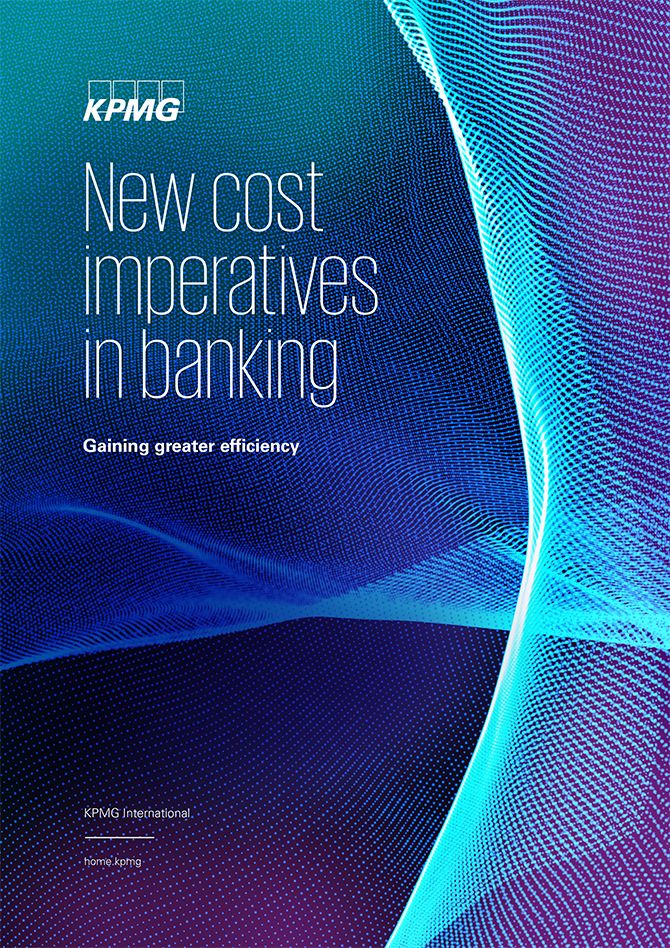In the wake of COVID-19, the cost agenda has been elevated to a new level of importance. In our recent survey of more than 200 executives at some of the world’s largest banks, a clear majority said they are looking to intensify and accelerate their cost transformation programs. This urgency derives from the downturn in bank profitability globally.
Download: New cost imperatives in banking
The cost agenda has propelled to one of the top priorities for banks around the world as a result of COVID-19.
Learn more:
- Views from 200+ executives from some of the world’s largest banks on how their cost priorities are changing in response to the pandemic
- Understand lessons from the past to inform the future
- Insight into what the future target operating model (TOM) and associated cost structures might look like
- Top drivers and enablers for successful cost transformation
Evolving cost priorities
Digitization is the number one lever for cost reduction across all regions at 59%, followed by reducing headcount and legacy IT transformation. We see the biggest gains are to be made in process automation and end to-end digitization in the middle- and back-office where there often remains a high reliance on inefficient manual processes. This also provides a route to headcount optimization — reducing labor-intensive paper-based processes freeing up staff to focus on more client-centric activities. It is a hallmark of the digitally enabled organizations that banks are seeking to create as they replace and modernize their legacy IT platforms.
KPMG Connected Enterprise for Banking is our framework and approach for enabling customer-centric, end-to-end digital transformation that meets the new demands banks are facing. A future-ready, connected bank will have the capabilities to quickly respond to market signals and pivot to capitalize on opportunities as they arise. To learn more click here.
Overcoming barriers to success
While the majority of banks surveyed were bullish about their cost optimization results in the past 3 years, when we looked deeper, most reported modest or limited success in critical areas such as digitizing key functions, linking process metrics to key outcomes and eliminating non-value add activities. They also identified several obstacles hindering their cost programs.
The barriers are numerous, complex and often interlinked. In KPMG’s view, the survey highlights the critical success factors for cost transformation including an understanding and prioritization of the key cost levers, a clear view of the TOM to deliver the cost benefits and a strong ‘cost culture’ within the bank.
Driving successful cost transformation
1. Set a focused cost agenda
To be successful banks should focus on key programs rather than a multiplicity of small micro initiatives to reduce costs. These programs can be grouped into 12 underlying cost transformation levers, approached through the lenses of strategy, simplicity and engineering. Which levers a bank prioritizes and when will depend on several factors:
- current (cost) performance against benchmarks and targets
- cost reduction target and investment in cost reduction
- speed to achieving cost reduction
- potential risks associated with each lever pulled.
With the current availability of internal bank data and industry benchmark data in combination with the increased use of contemporary analytical tools, analyzing and prioritizing the cost transformation levers can be done relatively easily and yield rich insights. KPMG uses advanced data analytics as an accelerator to help banks identify quickly where to focus their cost transformation efforts.
2. Rethink the TOM to maximize benefits
Cost optimization goals should be adjusted based on a deep understanding of the operating model, for example a 10% cost reduction could be considered aggressive in one area of a bank (e.g. loan application processing which has already been automated), while a 20% optimization may be considered conservative in another area of the same bank (e.g. systems licensing and servicing related to a large book of legacy products that are no longer being sold). An important principle is that TOMs should seek to drive increased simplicity.
More than a quarter (28%) of banks surveyed anticipate radical change to completely rethink their TOM. A solid understanding of current business operations, coupled with an in-depth understanding of variables such as timing, risk, downstream dependencies, prioritization, customer impact, and projected effect, will help prioritize implementation initiatives. Most important, a holistic cost strategy will help drive targeted impacts while maintaining a strong customer experience.
3. Recognize the importance of cost culture and enablers
Our research found the most important ‘soft’ enablers are seen to be a strong cost culture, the ability to commit time and resources long-term, executive accountability, and cost reduction key performance indicators (KPIs). However, only 58 percent of banks rated themselves highly on having a strong cost culture. Most important attributes to achieve sustainable efficiency include committed leadership, culture and accountability.
Executives and senior management across the enterprise must be fully brought into the cost effort — and in practical terms, this means ensuring that cost performance is one of the metrics in their personal compensation and reward. But, more than this, it’s vital that different individuals’ incentives don’t conflict or work against each other. Banks need to make performance improvement a continuous effort and focus on constantly evolving their initiatives as part of an overall and ‘live’ cost strategy.
Moving forward
The current environment requires many banks globally to transform their operating models and move their cost bases onto a sustainable lower footing. Those banks that don’t move fast or boldly enough are likely to find themselves unable to compete on price, value and delivery with their leaner and more efficient rivals. Whatever the market position of an individual bank, certain key principles for effective cost transformation will hold true:
- clear, well-defined and understood objectives
- inclusion of cost transformation as a permanent feature in the bank’s strategy
- rigorously prioritized cost take-out areas
- fully formed architecture for the transformed TOM
- a strong cost culture supported by enablers such as aligned KPIs
- fortitude and commitment by the bank’s senior leaders to stay the course.
At KPMG, our experience working with banks around the world on cost optimization initiatives has shown us just how much is possible and provided us with practical insight to address any challenges. For more information on how KPMG can help your organization be more efficient, contact your local KPMG office or any of the people listed below.




